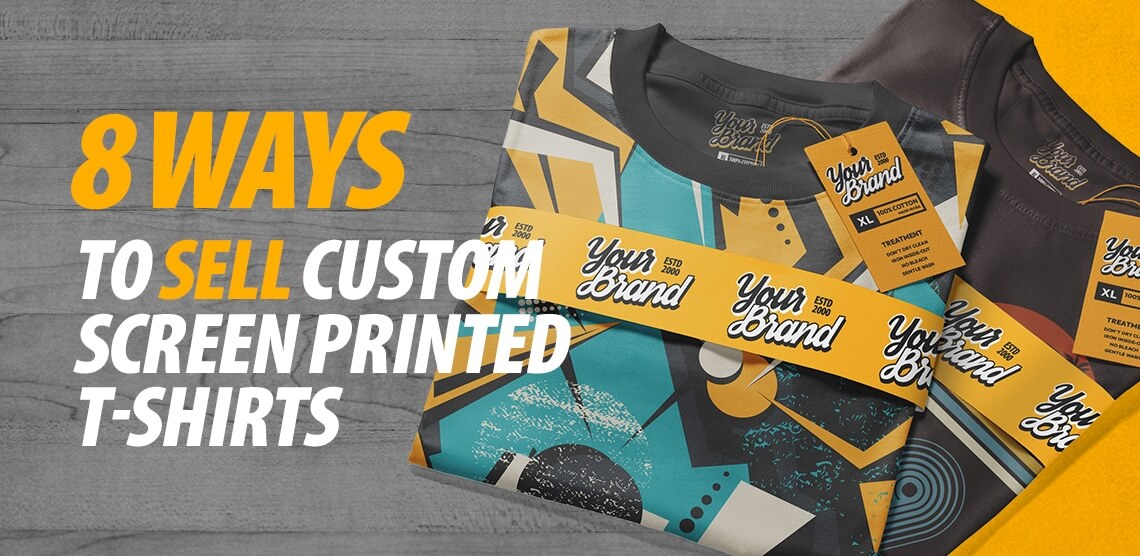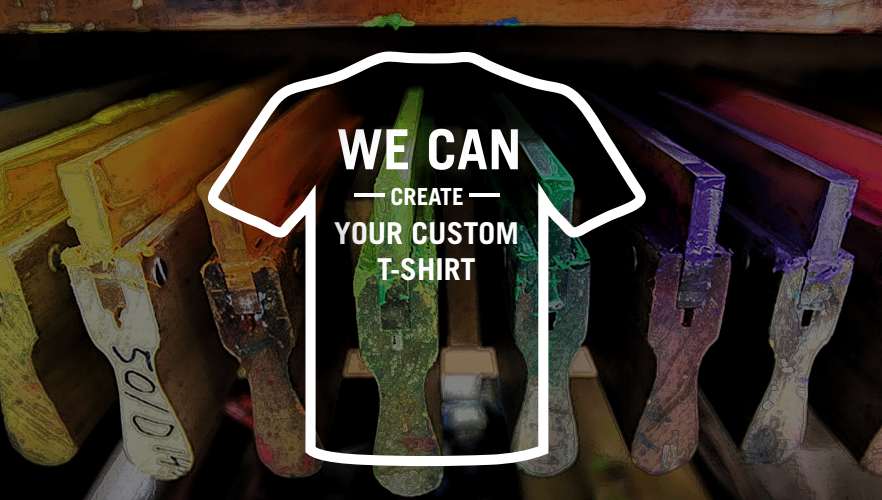Beginner-Friendly Screen Printing Kit for DIY Projects
Beginner-Friendly Screen Printing Kit for DIY Projects
Blog Article
Display Printing Uncovered: Every Little Thing You Required to Learn About Tee Shirt and Garment Printing Methods
If you've ever before questioned exactly how those lively styles wind up on your preferred tee shirts, you remain in the right place. Display printing is a fascinating technique that incorporates art with strategy, using limitless possibilities for creativity. Understanding the basics, from tools to ink selections, can greatly impact your results. Ready to explore the essential elements that make screen publishing an art kind? Allow's uncover the details that can boost your tasks.
The Essentials of Display Printing: How It Works
When you dive into display printing, you'll find it's both a scientific research and an art. At its core, screen printing entails developing a stencil, or screen, that allows ink to pass through only in certain areas (screen printing kit). You start by choosing your layout and preparing your screen with a light-sensitive emulsion. Once you reveal this solution to light, it sets, leaving your design as an adverse area.
Next, you'll blend your inks and prepare your printing surface. Placement the screen over the material, then utilize a squeegee to press ink with the screen onto the garment. This procedure calls for precision, as you desire clear, lively prints. After printing, you'll heal the ink with warm, ensuring it abides by the textile and lasts via washes. Each action is vital, and mastering them will boost your screen printing abilities, changing basic garments right into special, expressive items.
Types of Screen Printing Strategies
When you understand the fundamentals of screen printing, it's time to check out the various techniques that can boost your layouts. One preferred approach is standard display printing, where ink is pushed through a stenciled screen.
An additional option is plastisol printing, known for its longevity and vivid shades, making it a favored for several brand names. Experiment with halftone printing to produce slope effects and elaborate layouts.
Essential Equipment for Display Printing
To accomplish stunning outcomes in display printing, having the best devices is essential. You'll need a durable screen printing framework, which holds the mesh that moves your design onto the garment. Next, invest in high-grade squeegees; these are important for using ink evenly across the display.
Picking the Right Inks and Products
When selecting inks and materials for screen printing, you need to think about the type of ink that works best for your project. Assume regarding material compatibility to ensure your layouts look great and last lengthy. Likewise, check out green ink choices to make your printing procedure much more sustainable.
Types of Display Inks
Choosing the appropriate display ink is necessary for accomplishing vivid, durable prints that meet your project's requirements. There are a number of kinds of screen inks to analyze. Plastisol ink is popular for its versatility and convenience of use, supplying superb color opacity on dark textiles. Water-based ink, on the various other hand, offers a softer feeling and is eco-friendly, making it suitable for those looking to lessen their environmental impact. Discharge inks remove dye from the fabric, resulting in a soft, classic appearance however need particular handling. Specialty inks, such as glow-in-the-dark or metal, can add one-of-a-kind results to your styles. Evaluate your task requirements and pick the ink that straightens ideal with your desired result.

Textile Compatibility Factors To Consider
Understanding material compatibility is essential for accomplishing top quality display prints, especially since various materials respond distinctively to numerous inks. Constantly examine your inks on sample fabric to ensure they stick properly and preserve color integrity. Additionally, maintain in mind that fabric weight and appearance can affect the final end result, so selecting the ideal ink and product combo is crucial for your project's success.
Eco-Friendly Ink Options
Eco-friendly inks are ending up being a preferred option for screen printers that want to reduce their environmental effect while preserving high quality. When choosing inks, think about water-based inks, which are much less dangerous and simpler to tidy up contrasted to typical solvents. These inks bond well with fabrics, providing dynamic outcomes without hazardous chemicals. You might likewise check out eco-solvent inks that utilize fewer unpredictable organic substances (VOCs), making them a more secure alternative for both your health and the world.
Furthermore, seek inks made from renewable energies, such as soy or vegetable-based options. By choosing the best inks and materials, you'll not just develop magnificent layouts yet additionally add to a much more lasting printing process. Make the button, and your prints will reflect your commitment to the atmosphere!
Preparing Your Style for Display Printing

File Style Demands
To guarantee your design looks sharp and dynamic on textile, you'll require to pay close focus to submit layout requirements for screen printing. Make sure your design has a transparent history to prevent undesirable white edges on your prints. Maintain shade modes in mind; CMYK is basic for display printing, so convert your RGB creates as necessary.
Color Separation Strategies
Color separation is a crucial action in preparing your layout for display printing, and grasping it can substantially boost your print high quality. You'll require to break your style into individual shades, as each shade needs a separate screen throughout printing. Begin by recognizing all the shades in your style and create layers for each one. You can use software application like Adobe Photoshop or Illustrator to separate and different shades effectively. Be specific to save each layer as a separate data, generally in a layout like TIFF or PSD. This precision not just ensures accurate shade representation however also improves the printing procedure. By taking note of shade splitting up, you'll accomplish expert and dynamic outcomes in your screen-printed garments.
Resolution and Size
Accomplishing the very best cause screen printing starts with guaranteeing your design has the best resolution and size. Ideally, your art work should be at the very least 300 DPI (dots per inch) for sharp, clear prints. If you use lower resolution, your final item might look pixelated and amateur.
When it involves size, think about the measurements of your print location. Design your art work to match the final print dimension, preferably creating it in the real measurements you'll be printing. This means, you'll prevent any type of unforeseen scaling concerns.
Constantly check your design in both vector and raster styles. Vector graphics can be scaled without losing high quality, making them perfect for screen printing. Preparing properly will ensure your layout looks fantastic on every garment!
Step-by-Step Display Printing Refine
Screen printing is a dynamic process that allows you to create dynamic designs on various surfaces. To get started, you'll need a screen, solution, and your picked ink.
After cleaning out the unexposed emulsion, your display prepares. Set it up on your printing surface and align your garment beneath it. Put ink onto the screen and use a squeegee to push the ink through the pattern onto the material. Lift the display meticulously and allow the print completely dry. Cure the ink using heat to assure durability. That's it! You've efficiently screen printed your style.
Tips for Successful Screen Printing Projects
While you're diving right into your screen printing tasks, keep in mind that preparation is key to success. Beginning by gathering all your materials-- inks, squeegees, screens, and garments. A tidy work area aids avoid undesirable errors, so clean prior to you begin.
Following, verify your artwork is high-resolution and appropriately sized for your garment. Evaluate your display for proper direct exposure and tidy it thoroughly to avoid spots. When mixing your inks, follow the producer's guidelines to attain the ideal uniformity.
During printing, apply even stress with your squeegee for constant results. Don't rush; take your time to verify each print meets your criteria. After printing, let your garments completely dry completely before handling or packaging them.
Last but not least, constantly keep a sample of your benefit future referral. In this manner, you can analyze your progress and improve your techniques over time. Delighted printing!

Frequently Asked Concerns
Just how Lengthy Does It Require To Establish a Screen Printing Task?
Establishing a display printing task typically takes about 30 mins to an hour. You'll prepare the displays, mix inks, and adjust the press. The moment varies based upon complexity and experience, so remain arranged!
Can I Publish on Different Material Keys In Making Use Of the Exact Same Method?
Yes, you can print on different material types utilizing the exact same strategy, yet you'll need to readjust your inks and setups. Some fabrics take in ink in different ways, so experimenting guarantees the finest outcomes for each material.
What Are Typical Blunders to Avoid in Screen Printing?
When display printing, prevent common mistakes like utilizing the wrong ink, ignoring correct direct exposure times, or skipping pre-press checks. Always examine your configuration and preserve tidy screens to guarantee quality results each time.
How Can I Appropriately Tidy and Maintain My Display Printing Devices?
To correctly tidy and keep your screen printing equipment, you need to frequently wash displays with proper solvents, check mops for wear, and guarantee all devices are stored dry and dust-free. Uniformity protects against pricey repairs and enhances performance.
Is Display Printing Ecologically Friendly Contrasted to Various Other Techniques?
Display printing can be a lot more eco pleasant than other methods, especially if you use eco-conscious materials and water-based inks. By picking lasting supplies and custom screen printing techniques, you decrease waste and decrease your effect on the planet.
Screen Printing Uncovered: Whatever You Need to Know Regarding Tee Shirt and Garment Printing Methods
At its core, display printing entails developing a pattern, or display, that allows ink to pass through only in particular locations. Placement the display over the fabric, after that make use of a squeegee to push ink via the screen onto the garment. One prominent technique is conventional display printing, where ink is pushed with a stenciled display.When selecting inks and materials for display printing, you need to take right into account the kind of ink that works ideal for your project.
Report this page